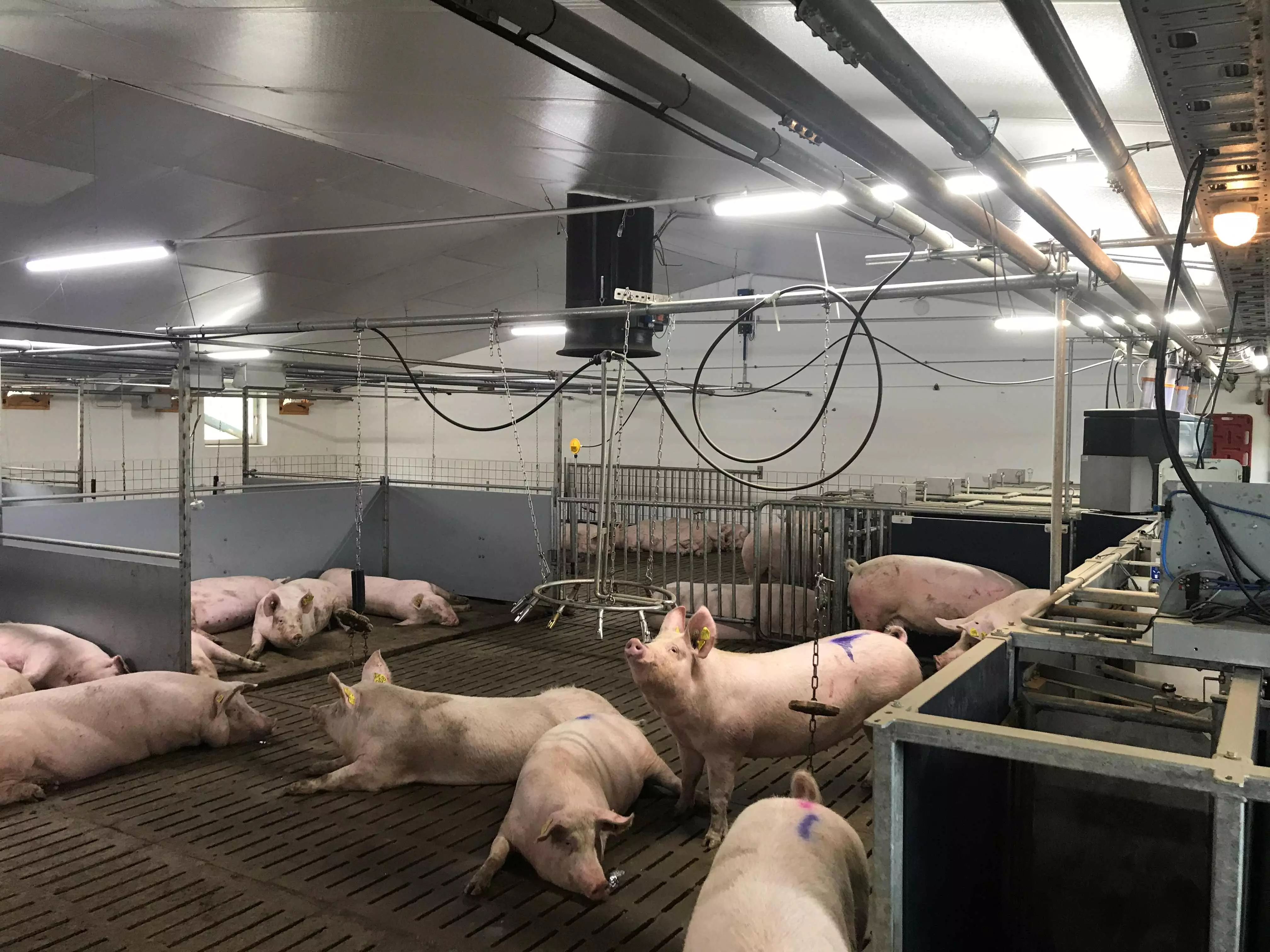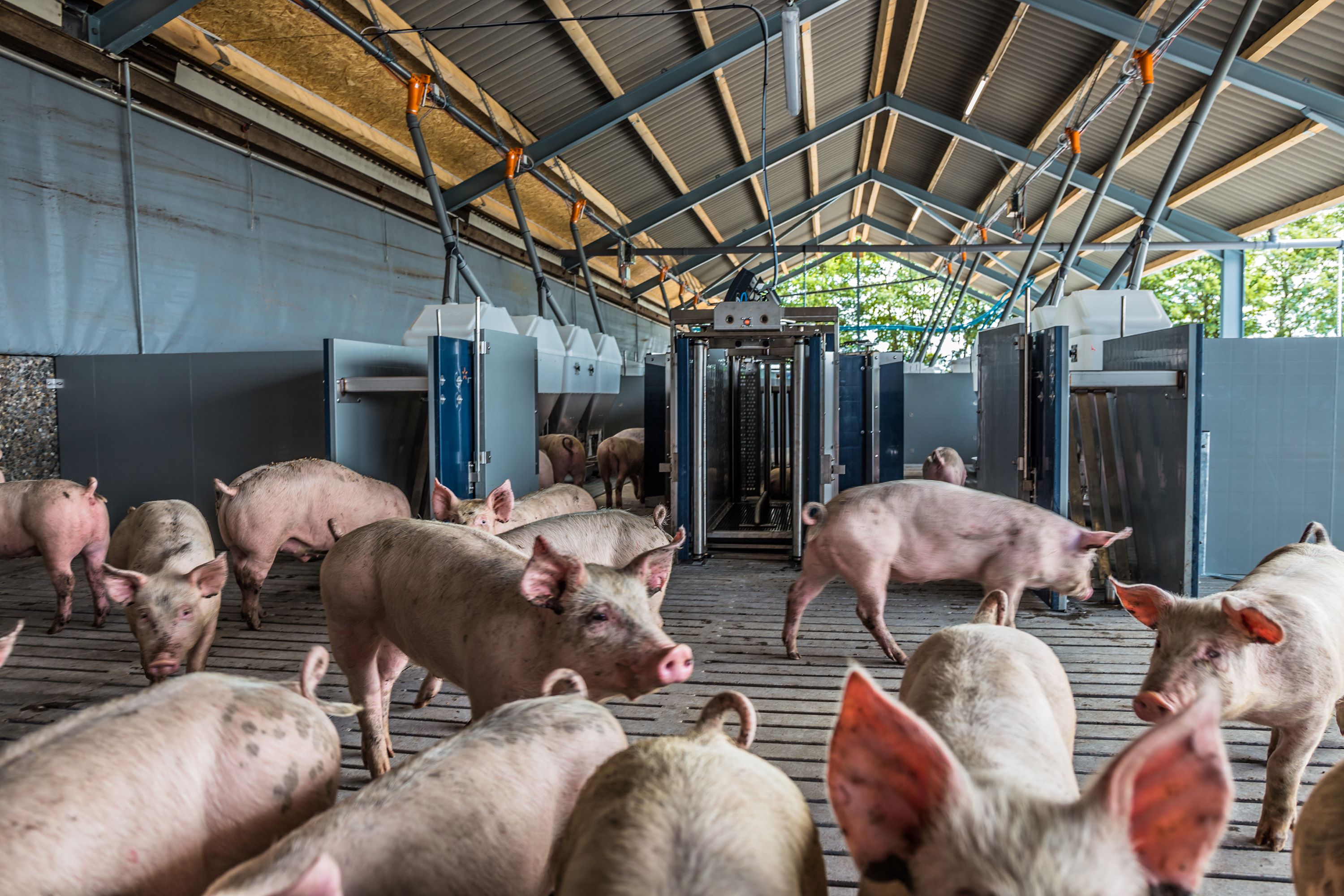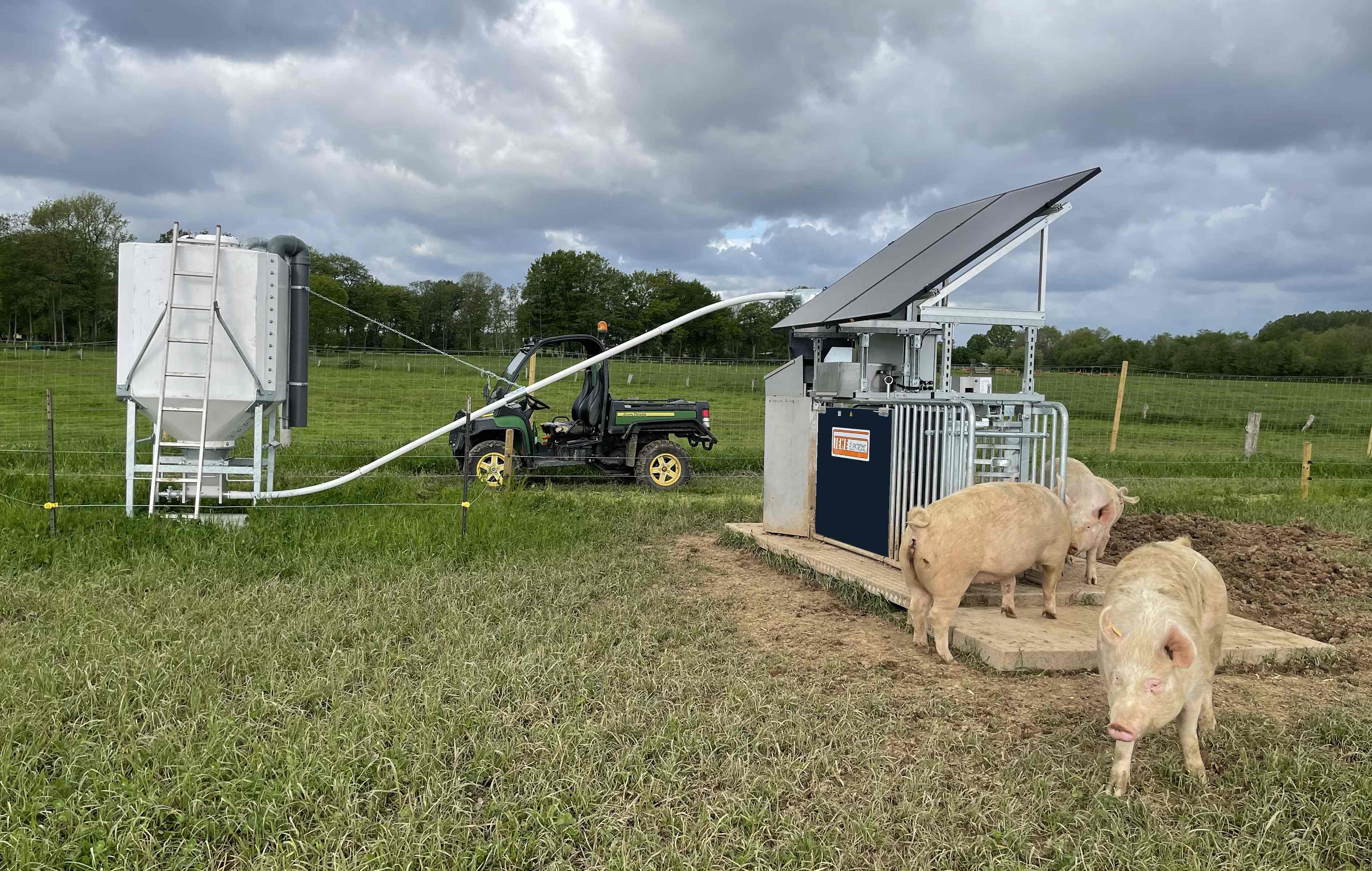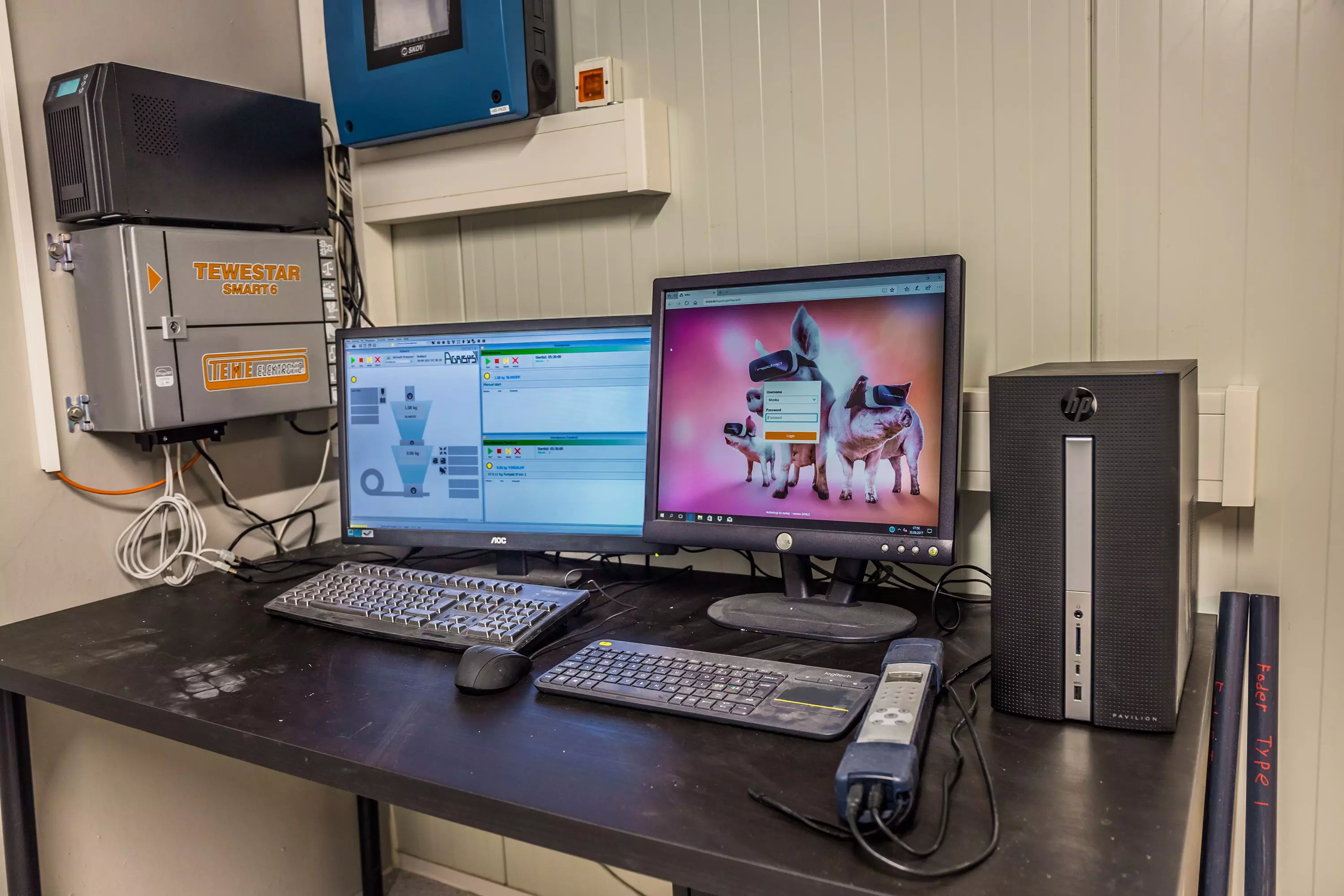On-demand feeding
Needs-based feeding based on individual data
In on-demand feeding, the animals activate sensors that trigger mechanisms through which individual data about the animal – such as the previous feed quantity, weight and health status – can be viewed. The feed quantity is adjusted to the animal’s age, weight class and health status, and supplemented with additives if necessary. The goal of on-demand feeding is to feed the animal automatically in accordance with its nutrient, mineral and vitamin requirements. The feeding technology used for this is decisive.
On-demand feeding can be implemented in farms of all sizes and tailored to the group size. This also allows on-demand feeding systems to be integrated into new or existing barn concepts.
On-demand stations preserve a state of calm in the barn, minimise stress and prevent jealousy between the animals. When the animals pass through the on-demand stations, they are identified by their RFID ear tag. This allows the animal to pass through the station undisturbed without any pressure from the other animals, who can also consume their feed in peace.
TEWE on-demand feeding involves automated technology such as gates, automatic feeders and sensors activated by the animals. Feeding can be performed individually via standardised automatic feeders or via TEWE feeding solutions. The on-demand station can optionally be fitted with automatic health monitoring systems and weight documentation data technology.
In conclusion
On-demand feeding enables needs-based, individualised single-animal feeding for lactating sows and fattening animals. The ability to choose between liquid, dry and pneumatic feeding allows various needs to be catered to. The integration of health checks and documentation over time allows full monitoring of the animals, while individual identification via RFID ear tags ensures stress-free, species-appropriate feed intake. All in all, on-demand feeding improves the welfare of the animals, increases efficiency, saves resources and allows feeding to be optimally adjusted to individual needs of each animal.

Benefits
-
Needs-based, individualised single-animal feeding: Feeding is performed based on the individual data and needs of each animal, ensuring an optimal supply of feed.
-
Versatile feeding methods: The method enables liquid, dry and pneumatic feeding for added flexibility.
-
Health monitoring and documentation: The feeding systems enable full monitoring of the animals’ health and complete documentation over long periods.
-
Customised to each animal: Each animal receives a customised feed ration according to its individual needs.
-
Increase efficiency and save resources: Automated feeding ensures efficient use of resources like feed and minimises workload.
-
Improved animal welfare: Stress-free, species-appropriate feed intake promotes the wellbeing of the animals and reduces stress in the pen.
-
Full monitoring via RFID ear tags: The individual identification of the animals enables precise monitoring and control of the feeding process.
Features
Needs-based feeding based on individual data:
The feeding systems are fitted with sensors which enable recording of individual animal data such as the previous feed quantity, weight and health status. This enables needs-based feeding based on the nutrient, mineral and vitamin requirements of each animal.
Adjustment of feed quantity to the animal’s age, weight class and health status:
The feed quantity is automatically adjusted based on the age, weight and health status of the animals. Additives can be added if necessary.
Integration into different sizes of farm and pen concepts:
On-demand feeding can be implemented in farms of every size and integrated into new or existing pen concepts.
Stress-free feed uptake thanks to individual identification of the animals:
The animals are identified by their RFID ear tags when they pass through the on-demand stations. This ensures that every animal can consume its feed undisturbed, without pressure from the others.
Automation with gates, automatic feeders and sensors:
The feeding systems are fitted with automated technologies such as gates, automatic feeders and sensors which the animals activate themselves. This enables precise and efficient feeding.
References




